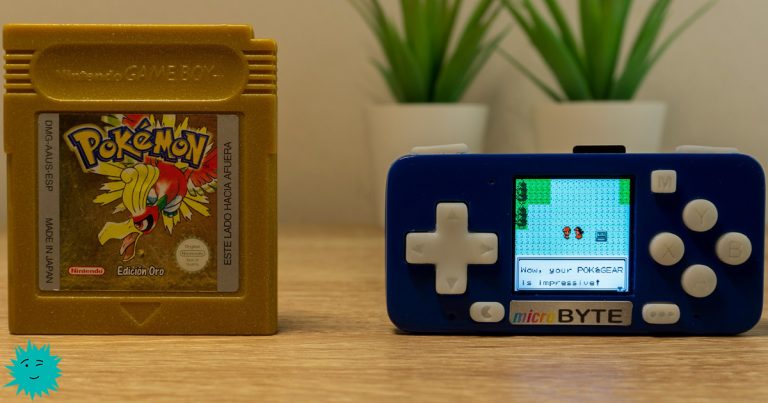from freelancing to working in a large IT company
Hello! I am Dmitry Chikunov, a graphic designer at R-Style Softlab. I have been working in the design industry for 17 years. In this article I will tell you about my background and give some useful tips on finding a job.

Making a Career in Design: In the 2000s and Now
I started doing design in middle school — in the early 2000s, I created animation and interfaces for flash games. There were no online courses back then, so I had to learn all the necessary skills myself. I studied Macromedia Flash, read thematic forums on websites. Drawing graphics wasn’t that difficult for me — my studies at an art school helped me with that.
I earned my first money in high school on a freelance exchange. I won a competition to design a company logo — I used the money to buy myself a powerful computer for work. There were other victories: when I was studying at university, I won a competition from the film company Mars Media. A production center offered to collaborate, and I started making posters for various TV series.

At that time, I was a generalist and tried myself in a variety of fields. For example, I designed toys, business cards, and calendars. My path was not the easiest — I received knowledge from different sources, looked for ways to gain experience.
Nowadays, it has become much easier to master the profession of a designer. Many online schools have appeared on the market — you can acquire basic skills and collect works for a portfolio in a year or a year and a half. The profession has become fragmented, and a trend has emerged in training to prepare narrow-profile specialists. Among the most popular areas are the following professions:
UX designer. Considers how the user interacts with the interface of a website or application.
UI designer. Renders the appearance and design of the interface of a website or application.
Motion designer. Creates animated graphic elements for videos, interactive applications, websites and other media projects.
3D designer. Engaged in visualization, 3D modeling and 3D animation.
There are now a lot of online training courses, but not all of them are equally good. To choose a suitable school and become a sought-after specialist, you need to read reviews, carefully study the program and portfolio of teachers. You can focus on large training projects and the presence of practicing specialists, whose portfolios can be found and viewed before the start of training.
A good education does not guarantee a flow of clients. After training, a designer needs to build a reputation and experience to establish themselves in the market – many spend months on this. Gradually, the customer base will grow, and you will feel the results of your work. Here's what you can do for this.
Offer your services to companies directly. Find a business that interests you and offer cooperation. Don't be afraid to write first: even if you are rejected, nothing terrible will happen.
Take part in competitions. Follow the announcements on specialized sites and look for suitable competitions. Many interesting things are published, for example, on DesignNewsEven if you don't win, you will make a name for yourself in the professional community, and potential clients may notice you.
Develop a personal brand. Create an account on relevant social networks, for example, on Behance or Dribbble. You can share your work there., communicate with other designers and look for orders. You can not only find clients, but also improve your knowledge.

To maintain a good reputation, always meet deadlines and stay on the radar. Show interest in projects, express and argue your opinion, offer new ideas. A large part of a designer's work is studying the task, discussing and agreeing on the result.
What is better: freelancing or an office?
The big advantage of working as a graphic designer is that you can choose your own lifestyle. Work in an office, freelance, or remotely in a company. I personally tried all the options.
Freelance. I took orders on the exchange and was responsible for my own income. I was at the top of the search on the platform – customers saw my profile on the first pages and asked for services. But the exchange changed the rating calculation system, and my account dropped far down. Then I started thinking about how to find a permanent job and get a stable income.
Office. After the exchange, I got a job at a company that sold tiles and plumbing. I was promised the latest model of equipment, but in fact it turned out to be a weak computer on Windows 2000 with ancient software. One day was enough to understand: it is better to work from home and on your own hardware.
Remote work in the company. I am currently working remotely at R-Style Softlab. This format has many advantages: no need to waste time on the road, you can spend more time with your loved ones, there are always new projects – you will not be left without tasks. Of the disadvantages: it is difficult to control your workday. For example, I can immerse myself in a project and forget about time.
I have been working at R-Style Softlab for over a year and a half. Three things are especially important to me in my work:
Relationships in the team. If difficulties arise, colleagues and management come to the rescue. You can always discuss work and personal problems and find a solution.
Work-life balance. I used to work more than 8 hours a day, but recently I started to monitor this and take breaks. I set aside time to play with my daughter during the day, this kind of rest helps me to reboot.
Career growth. There is no ceiling in the profession, you can develop both horizontally, constantly mastering new tools, and vertically – managing a team, being responsible for complex projects. Now I like my position, I am developing at a comfortable pace and moving towards creating a single visual style for all communications in the company.
What a graphic designer should be able to do
To be a good specialist, you need to be able to do several things:
Work with graphics programs. In my work I use Photoshop, After Effects, Animate. I do many tasks in Figma – it is a practically universal platform. Now I work most with PowerPoint – I design presentations for international forums and banking events there.
Use neural networks. I often work with artificial intelligence when designing social networks. Many designers are afraid of neural networks, but I think it is necessary to try different services for generating images. Sometimes AI draws with errors: it happens that a person suddenly has an extra finger or an extra leg. Then you have to spend extra time on retouching. But I believe that in the future, neural networks will become better and will firmly enter our lives. Therefore, it is necessary to learn to work with artificial intelligence now.
Master 3D graphics and 3D motion. In recent years, these techniques have become increasingly popular. They can be used to create dynamic and realistic animations, make the brand's TOV more lively and attract the audience's attention. Many companies now use 3D graphics on websites, in applications and advertising to stand out from the competition. An example of this is the online services of Russian banks.
Be flexible in communication with the customer. During the project defense, you need to be prepared for edits: they are inevitable. I always find out why the customer considers some element unsuccessful and how he would like to see it. If I do not agree with the client's opinion, I argue my point of view, and together we come to a compromise.
To minimize edits, I prepare for each task and project. I find out all the customer's needs and wishes in advance – briefs and references help with this. If there are comments, I don't take them personally.
Gain visual experience. When I communicate with clients, I often bring non-standard ideas – for this I develop my visual acuity. I look at the work of other designers, for example in Behance, Dribbble, Pinterest and I'm keeping an eye on the award Awwwards. There you can see not just a picture, but the entire site: how it works, what design elements the specialists use. This helps to adopt some tricks and cool solutions.

Top 3 Tips for Finding a Job
Many people think that neural networks will soon replace humans and designers will no longer be in demand. In fact, if you make friends with AI and use it in your work, you can stand out among a large number of competitors. I have collected three more tricks that will help you get a good offer:
Make a portfolio. It is often collected in Behance, but you can also use other services, such as Dribbble. Include in your portfolio relevant works that you consider the best. Design them with small cases: who was the customer, what was the task, how it was solved and what was the result. This way, the HR specialist will see your approach to work and understand what tasks you can solve.
Don't refuse the test assignment. The employer will test you in combat missions and evaluate your skills. And you will understand how the technical task is set, see the requirements and decide whether you are ready to work under such conditions.
Write cover letters. To get the recruiter's attention, briefly explain why it is important for you to work for this particular company. HR specialists value interested candidates and are more likely to offer them cooperation. But they usually skip template letters.
And one last piece of advice: don't forget that you are also evaluating the employer. Ask questions about the working conditions, find out about additional benefits, for example, whether there is a voluntary health insurance policy or training at the company's expense. This way, you are more likely to end up in an organization where you really want to work.





